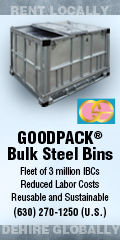
| Archives/Subscribe | www.clfp.com | Contact Us | September 3, 2014 |
CARB Holds Workshops on Interim Guidance for Distribution of Auction Funds
On Monday, August 25, 2014, the California Air Resources Board (CARB) and the California Environmental Protection Agency (CalEPA) held a public workshop in Fresno, CA seeking public input on the investment of Cap-and-Trade auction proceeds. SB 535 requires that 25 percent of auction proceeds be invested in projects that benefit disadvantaged communities and at least 10 percent be invested in projects located within those communities. State law also directs CalEPA to identify disadvantaged communities and CARB to develop guidance for state agencies on approaches to maximize benefits to disadvantaged communities.
The purpose of the workshop was gather public input on CalEPA's proposed efforts to identify disadvantaged communities for priority investments of auction proceeds using the CalEnviroScreen, as well as to elicit input on CARB's proposed interim guidance for state agencies on developing criteria to determine which projects benefit disadvantaged communities.
The draft Interim Guidance for the state and local agencies charged with the expenditure of the auction proceeds is designed to provide educate the agencies on how to meet the statutory requirements of AB 32 and SB 535 and how to determine whether proposed projects that achieve the goals of AB 32 would also benefit disadvantaged communities.
SB 535 (De León, Chapter 830, Statutes of 2012) directs State and local agencies to make investments in so-called disadvantaged communities. That investment comes from the proceeds of the quarterly auctions held by the CARB under the Cap-and-Trade program. Currently, about $200 million is available for investment by state agencies in these disadvantaged communities.
Industry concerns center on the fact that each agency receiving auction proceeds for investment is responsible for administering its own programs. The decisions about how to design programs, select projects for funding, and implement projects rests with each state agency.
CLFP Position
CLFP attended the workshop in order to reiterate positions previously articulated at CARB Board hearing and workshops regarding the disbursement of auction funds pursuant to SB 535 requirements. CLFP positions include the following:
Timing on Guideline Development
It is CARB's goal to make the auction funds available as soon as possible. Therefore, staff expects to present the Interim Guidelines to the CARB Board at the next Board hearing scheduled for September 18 in Sacramento.
However, efforts will continue on the development of the Guidelines throughout the rest of 2014. CARB staff expects the final version of the Guidelines to be adopted spring 2015.
CLFP will continue to push for provisions in the guidelines that will aid industry in gaining access to available funding and to press CARB to strengthen accountability requirements.
|
|
| CALIFORNIA LEAGUE OF FOOD PROCESSORS 2485 Natomas Park Dr., Suite 550 Sacramento, CA 95833 Phone: (916) 640-8150 Fax: (916) 640-8156 www.clfp.com |
 |

